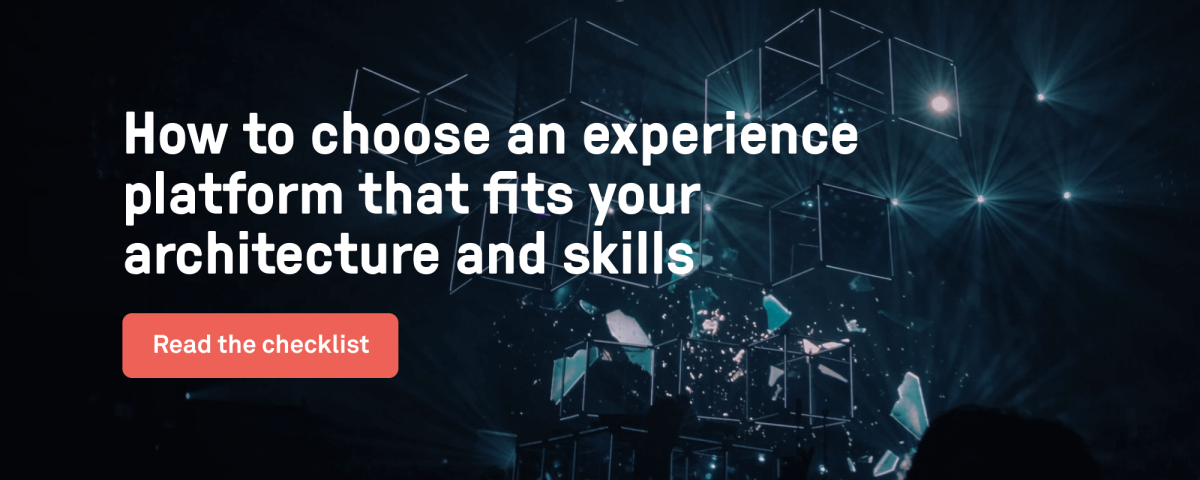
What is Enterprise Search?
Learn the essentials of an enterprise search in order to improve the indexing and retrieval of your complex data.
Written by Morten Eriksen on
For many organizations a basic search engine on their website is enough—for documentation, reuse, or navigation. But once complexity grows, a simple search falls short. That’s where enterprise search enters the picture.
Definition of Enterprise Search
Enterprise search is a software solution where authorized users can retrieve content from multiple, disparate sources.
Large organizations often rely on a patchwork of systems: databases, intranets, file systems, content management systems, and e-mail. Enterprise search integrates across these silos, whether the data is structured or unstructured, and makes it accessible with proper security controls.
Main Ingredients of Enterprise Search
- Content collection: Push models send new content directly to an API, while pull models use crawlers or connectors to check for updates.
- Content processing: Documents are normalized using filters, tokenization, stemming, and entity extraction to improve recall and precision.
- Indexing: Relevant terms are stored in a lookup-optimized index, enabling fast retrieval.
- Query processing: User queries combine search terms with facets or filters.
- Matching: Queries are compared against the index to return relevant documents.
Differences from Common Search
Unlike web search (the open internet) or desktop search (a single device), enterprise search unifies results from across the organization. Key differentiators include:
- Federated search: Broadcasting queries across sources and merging results.
- Enterprise bookmarking: Collaborative tagging for structured and semi-structured data.
- Faceted search: Narrowing results via faceted classification.
- Text clustering: Grouping results into topics when metadata differs.
- Rich user interfaces: More complex than web search to support productivity.
- Access control: Enforcing user rights across diverse systems.
See also: How Enterprise Search Can Help Your Business »
What’s in It for Me?
An enterprise search solution offers fast, secure, and manageable access to all your organization’s repositories. It’s especially relevant when you manage large volumes of data across different systems. If your needs are simpler, a standard search may suffice.
Core benefits include:
- Improved decision making: Executives gain quick access to reports, legal documents, and more.
- Increased productivity: Employees spend less time hunting for information in silos.
- Better customer service: Customers and support staff alike can find relevant answers quickly.
- Cost effectiveness: Higher ROI over time through efficiency and better data use.
Trends in 2025
Enterprise search is evolving with AI-powered features: natural language queries, generative summaries, and personalization. Vector search and semantic retrieval are helping organizations find not just exact matches, but meaningfully related content.
Security remains a priority, with fine-grained access control and compliance integration. And hybrid models—combining headless search APIs with tailored UIs—are becoming the norm for flexibility.
First published 26 August 2020, updated 17 September 2025.
Frequently asked questions
What is enterprise search?
Enterprise search is a software solution where authorized users can retrieve content from several disparate sources.
What are the main features of an enterprise search?
In an enterprise search solution, content is processed through specific phases from source repository to the search results, with the following main ingredients: Content collection, content processing, indexing, query processing, and matching.
What separates enterprise search from common search?
In contrast to most web and desktop search solutions, enterprise search often features indexed content from multiple repositories, federated search, enterprise bookmarking, entity extraction, faceted search, text clustering, user interface, and access control.
What benefits are there in enterprise search?
An enterprise search solution is a powerful tool to index, search, and display content from across all your organization’s complex repositories in a fast, secure, and easily manageable way. It can improve your organization's decision making, productivity, customer service, and cost effectiveness.

Morten Eriksen
Morten is the CEO and co-founder of Enonic. He has extensive experience as an entrepreneur focusing on areas like business development, product management, sales, and marketing. He started a digital agency in 1995 and built his first CMS in 1997, then founded Enonic in 2000 where his mission is to accelerate digital projects using innovative technology.

